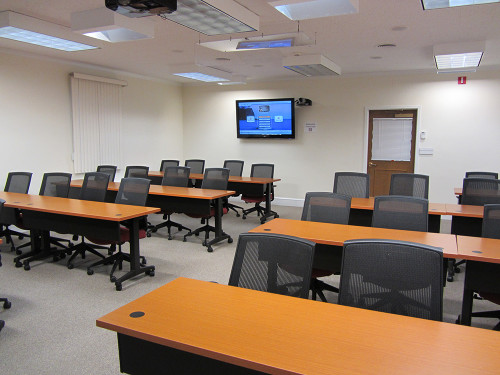Webb Institute has a multitude of locations and facilities that are available to students to make their educational experience as enriching as possible. Below are some places on campus to help you achieve your greatest level of success.
The ALC was designed to support new learning technologies together with distance learning capabilities. The classroom is a reconfigurable space that supports both individual and group learning modes. The room is outfitted with a video conferencing system, cameras, speakers, and microphones that support the receipt and delivery of lectures from remote and local participants. The video conference system is configured to allow for lecture capture and live internet streaming of lectures.
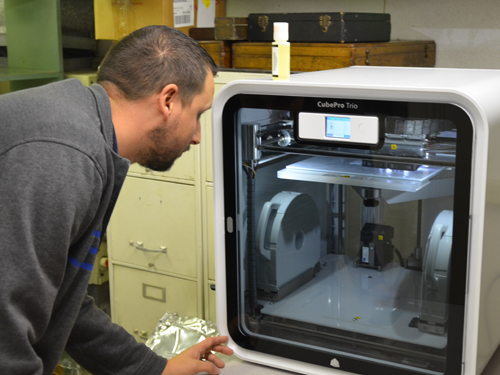
Webb Institute has a wireless local area network that services all students, faculty, and administrators. Wireless transceivers are placed throughout the campus, providing access in dormitory rooms, classrooms, laboratories, library, auditorium, and various public spaces. All classrooms have laser printers available for student use both during and outside of class time.
The Webb curriculum incorporates many software packages. Students have available symbolic math software, finite element analysis software, and various naval architecture programs.
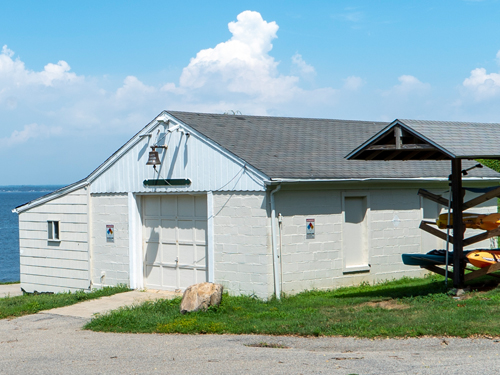
The Goldbach Boathouse, located near Webb’s private beach and pier, houses supplies for the fleet of 420s, Boston Whalers, wind-surfers, and kayaks. Students often use the boathouse to store sailing equipment and to unwind with an outdoor BBQ. The boathouse was named for Richard and Janet Goldbach in recognition of their generous support to Webb by Richard A. Goldbach ‘58.
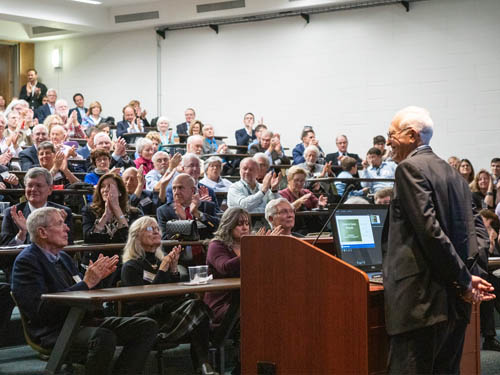
As the primary gathering space for the entire Webb community, the Henry Auditorium is a valued asset that gets constant use by students, faculty, staff, and guest speakers. The technology available in this room includes a high-definition projector, an HD-format motorized projection screen, a lectern-mounted touch-screen master control panel, and integrated audio and video recording station.
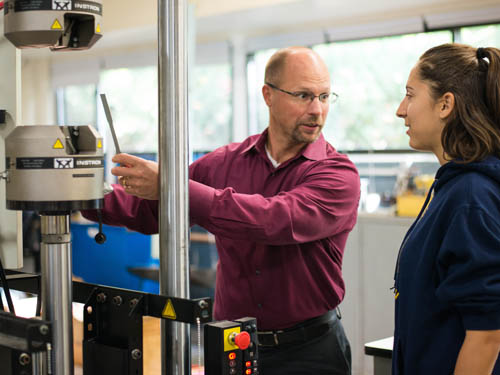
In teaching both theory and practice, Webb Institute offers an array of state-of-the-art labs designed specifically to help students explore and master naval architecture and marine engineering.
Among the facilities:
The Chemistry Laboratory contains the standard equipment for performing inorganic chemistry experiments.
The Physics Laboratory, in which experiments involving heat, sound, and light are performed, includes various types of calorimeters, thermal expansion apparatus, thermal conductivity apparatus, apparatus for the study of waves, vapor pressure apparatus, spectroscopes, and optical benches.
The Material Science Laboratory, is equipped for the microscopic examination, heat treatment, and physical testing of metals; included are a specimen mounting press, polishing accessories, hardness testing machines, a metallurgical microscope with digital camera, and heat-treating furnaces. It is co-located with the chemistry laboratory.
The Marine Engineering Laboratory is equipped with a complete small but fully functional steam plant, a diesel engine lab with two small engines for students to disassemble and reassemble, two diesel engines with attached dynamometers and emissions measuring equipment, a small gas turbine, and additional equipment for studying machinery performance, including a centrifugal pump lab.
The Material Testing and Structural Laboratory, has brand new Instron testing equipment. The new equipment includes an 8801 material testing system with an environmental chamber, three point fixture, and fatigue testing capabilities. The lab also has a newly upgraded Southwark Emery universal testing machine with 200,000 pound load capability. Both machines include digital load/strain control and data capture, synchronized video capabilities, and an assortment of grips for testing samples of varying shapes. Lastly, the lab also includes a Tinius Olsen Charpy impact test apparatus.
The Electrical Engineering Laboratory, includes instruments for measuring resistance, capacitance, inductance, current, voltage, and power. Five multi-purpose Hampden work stations are available for student use. Also available for class exercise are motors, generators, transformers, controllers, and various digital and analog electronic devices. The work in the laboratory ranges from electrical measurements through the study of circuits, machines, and electronic devices.
The Fluids Laboratory, is equipped with devices that provide demonstrations to the students as well as research capabilities. The largest device is a recently purchased Edinburgh Designs circulating water channel. Instrumentation for the flow channel includes a LaVision particle image velocimetry (PIV) system, Hydranautics force blocks, Valadyne signal conditioner and a variety pressure sensors. This equipment is used to demonstrate flow processes in conjunction with classroom learning. This equipment is also used to conduct sponsored research.
The Fluids Laboratory also includes a pipe-flow apparatus. This equipment is used to demonstrate head losses due to changes in Reynolds number and for flow through common pipe fittings. Lastly the lab includes a centrifugal pump demonstrator. The pump has a variable speed drive and is fitted with instrumentation to measure pump performance and efficiency.
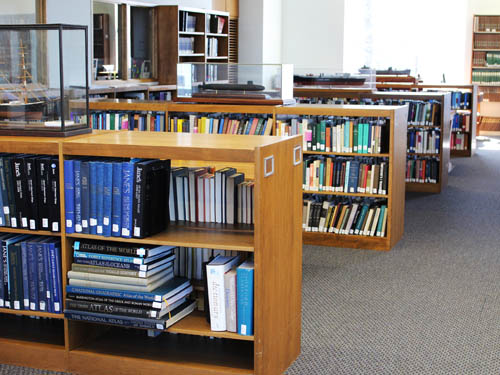
The collection at the Livingston Library consists of approximately 50,000 titles and 300 periodical titles in print. Titles in electronic format substantially expand the Library’s resources. The collection’s strength is in works on marine engineering and naval architecture, professional periodicals, and proceedings of conferences and engineering societies. It also includes a significant selection of books in applied science and maritime history. A general collection in the sciences and humanities is maintained with particular emphasis on works that support the curriculum.
The Library subscribes to many databases, including ScienceDirect, Marine Technology Abstracts, Academic Search Premier, Academic Universe, Business Source Premier, and many others. Ebsco Discovery System provides integrated searching of all resources. Interlibrary loan and personal assistance with reference is always available. Many of Webb’s own resources are unique and are sought by libraries worldwide.
The Robinson Model Basin houses a ship model towing tank and instrumentation room. The tank is used for student course work, academic instruction, consulting work, and U.S. Navy research. The single-rail towing tank is 93 feet long, including an eight-foot starting dock at one end. It is ten feet wide and five feet deep. Ship models can be towed and their resistance measured by suitable dynamometers up to speeds of 15 feet per second. Open-water tests of model propellers are also conducted using a special propeller boat equipped with a drive motor and dynamometers. Its eight-paddle wavemaker can produce regular and irregular long crested seas of varied configurations. The wavemaker also provides active wave damping in the basin. A full-height viewing window allows observations from above and below the waterline. The tank’s electric power is provided through a harmonic power filter and has 24 hours of battery back-up. Electronic instrumentation and data processing equipment are installed as an integral part of the tank. Most of the instrumentation is compatible with the circulating water channel, including the particle image velocimetry (PIV) instrumentation.
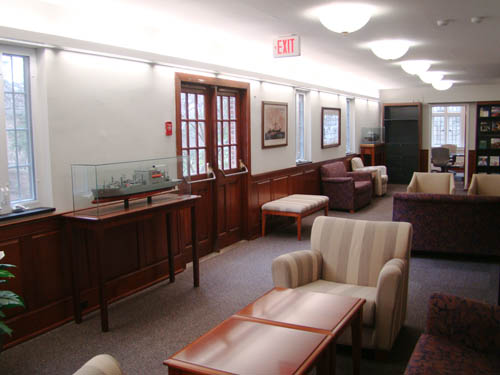
The Rosenblatt Gallery displays unique works of art and ship models. Here, also, technical periodicals specific to the profession are available to students at all times. Webb’s archives house unique texts, lines drawings of ships, and memorabilia of interest to naval historians.
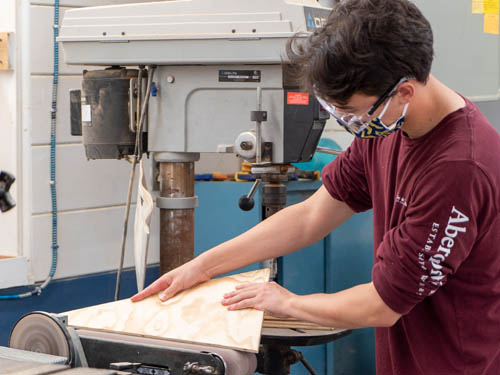
Machine Shop: Available to students for instructional use and project work, Webb’s machine shop, houses a set of MIG, TIG, and arc-welding stations, lathes and milling machines (including a CNC mill), as well as saws, grinders, drill presses, and many smaller items typically found in a shop. It also contains an aluminum shop for cold forming aluminum sheets.
Carpenter Shop: Also available for student use, Webb’s Carpenter Shop houses various power tools: including a table saw, compound mitre saw, jointer, bandsaw, drill press, and a suite of hand power tools. The shop also houses the Webb model cutter, a ShopBot three-axis CNC router. Students often use the shop for various projects.
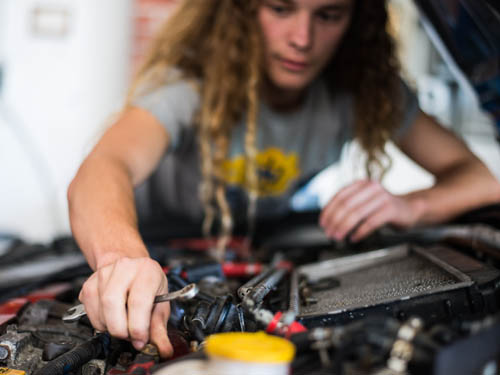
The Student Garage is a place for students to work on class projects as well as personal projects. Students may work on their vehicles in nearly all facets, from simple oil changes and brake jobs to full engine and transmission repair and replacement.

